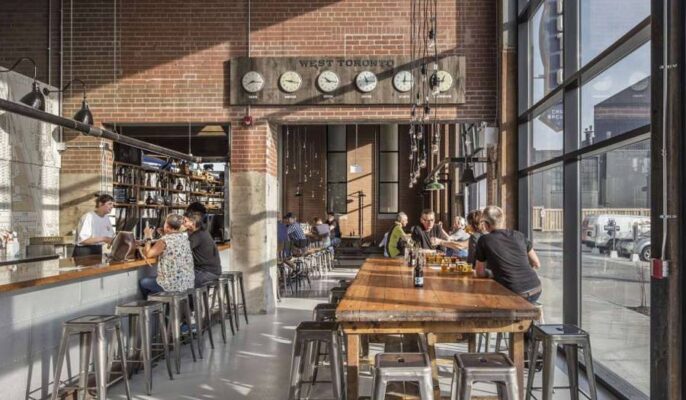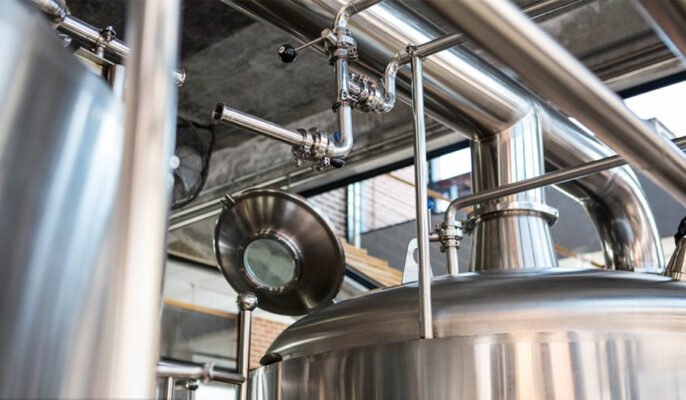nano beer brewery equipment are small-scale craft beer production facilities gaining popularity among artisanal brewers. This guide covers key equipment and considerations for setting up a nano brewery.
Overview of nano beer brewery equipment
nano beer brewery equipment refer to very small commercial brewing systems producing limited quantities of craft beer. Here are some key features:
| Type | Details |
|---|---|
| Production volume | Up to 50 barrels (1,550 gallons) annually |
| Batch size | 1-7 barrels per batch |
| Setup costs | $10,000 to $150,000 |
| Business model | Startups, tasting rooms, brewpubs, contract brewing |
Nano setups allow craft brewers to commercially launch new beers on a small scale before expanding.
nano beer brewery equipment Essentials
The core equipment requirements for a nano brewery setup include:
| Equipment | Purpose |
|---|---|
| Mash tun | Mixing milled grains with hot water for mashing process |
| Lauter tun | Separating sweet wort from spent grains |
| Brew kettle | Boiling wort and adding hops |
| Fermentation tanks | Fermenting wort into beer with yeast |
| Glycol chiller | Cooling wort quickly to pitching temperature |
| Temperature control system | Monitoring and controlling temperature of batches |

Additional equipment may be needed for water treatment, cleaning, packaging, etc.
Sizing Considerations for Nano Setup
Equipment sizing depends on factors like:
- Annual beer production targets
- Peak batch size
- Number of beer varieties
- Package types – kegs, bottles, cans
- Ingredients – grains, hops, yeast types
- Production schedule – batches per week
- Growth plans for capacity expansion
Accurately estimating these parameters allows proper sizing of each equipment item and infrastructure needs like floor space, power, water, etc.
Equipment Design and Material Choices
Nano brewery equipment should be designed considering:
- Material – Stainless steel is ideal with smooth finishes for easy cleaning and durability. Food-grade quality is essential.
- Cleaning – Smooth interior surfaces, removable fittings, CIP sprayballs enable effective cleaning.
- Sanitation – Equipment design must prevent bacterial contamination and growth.
- Scalability – Modular designs allow incremental expansion of batches and capacity.
- Automation – Support for automation modules improves efficiency and consistency as production scales up.
- Installation – Compact footprint and minimal utility connections simplify installation.
- Maintenance – Quick disassembly, accessible parts and diagnostics enable easier maintenance.
Matching equipment capabilities to current and future production needs is vital.
Key Suppliers of nano beer brewery equipment
Some popular suppliers of nano brewery equipment include:
| Company | Location |
|---|---|
| Stout Tanks | USA |
| Ss Brewtech | USA |
| Stempler | Canada |
| Mini Brew | Italy |
| Crosby & Baker | UK |
These companies offer specialized nano brewery equipment configured for small batch production.
Cost Analysis of Nano Brewery Setup
An indicative cost breakdown for a 5-barrel nano brewery is:
| Equipment | Estimated Cost |
|---|---|
| Mash tun | $4,000 – $10,000 |
| Lauter tun | $5,000 – $15,000 |
| Brew kettle | $6,000 – $20,000 |
| Fermentation tanks | $4,000 – $12,000 each |
| Glycol chiller | $4,000 – $10,000 |
| Temperature control system | $2,000 – $5,000 |
| Total Equipment Cost | $25,000 – $75,000 |
Additional costs include plumbing, power supply, construction, permitting, and more. Leasing equipment can reduce upfront capital investment.
Tips for Selecting nano beer brewery equipment
When selecting nano brewery equipment, consider:
- Stated batch size and daily production capacity
- Construction material and quality
- Equipment footprint and utility requirements
- Process automation capabilities and options
- Cleanability and maintenance access
- Customer support and warranty offered
- Vendor reputation and experience with nano installations
- Shipping/freight costs if importing equipment
- Availability of spare parts and consumables
- Cost of additional modules/accessories needed
Get quotes from multiple vendors and evaluate based on both technical factors and commercial terms.
Installation Best Practices
Proper installation is key to maximizing equipment performance and lifetime:
- Follow equipment manuals for unpacking, parts assembly, calibration
- Ensure stable, level mounting with all feet supported
- Allow sufficient clearance on all sides for operation and maintenance
- Connect utilities like power, water, glycol with shutoff valves
- Integrate automation, controls, and data acquisition as applicable
- Leak test piping connections under pressure
- Passivate and sanitize entire system thoroughly before use
- Train staff on operating and cleaning procedures
Taking care during installation avoids issues and unplanned downtime later on.
Operation and Maintenance
To keep nano brewery equipment in top condition:
- Follow instructed operating procedures and brewing processes
- Perform preventive maintenance per manufacturer schedule
- Inspect equipment routinely for leaks, damage, abnormal wear
- Lubricate moving parts like pumps, motors as needed
- Monitor temperature sensors and controls
- Keep equipment surfaces clean; schedule periodic deep cleaning
- Sanitize thoroughly between batches
- Stock spare parts like seals, gaskets, valves for critical components
Good operating and maintenance practices maximize equipment life and beer quality.

Scaling Up Nano Brewery Operations
To scale up from nano to microbrewery production volumes:
- Size initial equipment for modular expansions
- Plan infrastructure capacity like floor space, utilities, storage
- Stage additional fermentation tanks to increase batches
- Add filtration, carbonation systems for packaging
- Install lab equipment for quality testing at larger volumes
- Automate manual processes like data logging, cleaning, moving materials
- Expand distribution and sales channels for increased output
- Upgrade accounting, ERP, warehouse systems to handle growth
Thorough planning allows a gradual production ramp-up while maintaining quality.
Pros and Cons of Nano Breweries
Nano breweries offer certain advantages but also some limitations to consider:
Pros
- Lower capital investment to start small
- Ideal for experimenting with new styles
- Build local brand recognition and fanbase
- Expand distribution slowly initially
- Lower regulatory barriers compared to microbreweries
- Gain experience before committing to larger brewery
Cons
- Very limited production volume and sales
- Equipment may require upgrades later
- Manual processes result in inconsistent product
- Hard to supply wider distribution at nano scale
- Marketing is challenging with niche products
- Difficult to leverage economies of scale
The ultra-small nano model provides an entry point but has restricted commercial viability.
FAQs
| Questions | Answers |
|---|---|
| What is the typical batch size for a nano brewery? | 1-7 barrels per batch is common for nano breweries. |
| What are the most important equipment for a nano brewery? | Mash tun, lauter tun, brew kettle, fermenters, and a glycol chiller system. |
| How much does a 2-barrel nano brewery cost? | Around $50,000 to $100,000 for a 2-barrel nano brewery equipment setup. |
| Can nano brewery equipment be automated? | Yes, nano equipment can be semi-automated or fully automated using brewery control systems. |
| How much space is needed for a nano brewery? | From 500 sq.ft. to 2000 sq.ft. depending on the batch size and layout. |
Conclusion
Nano breweries provide a compact setup for crafting specialty beers on a small scale. With the right equipment selection and process controls, nano breweries can produce uniquely flavored beers. However, the ultra-low production volumes also limit commercial viability. Scaling up to a microbrewery may be required to develop a sustainable artisanal brewery business.




